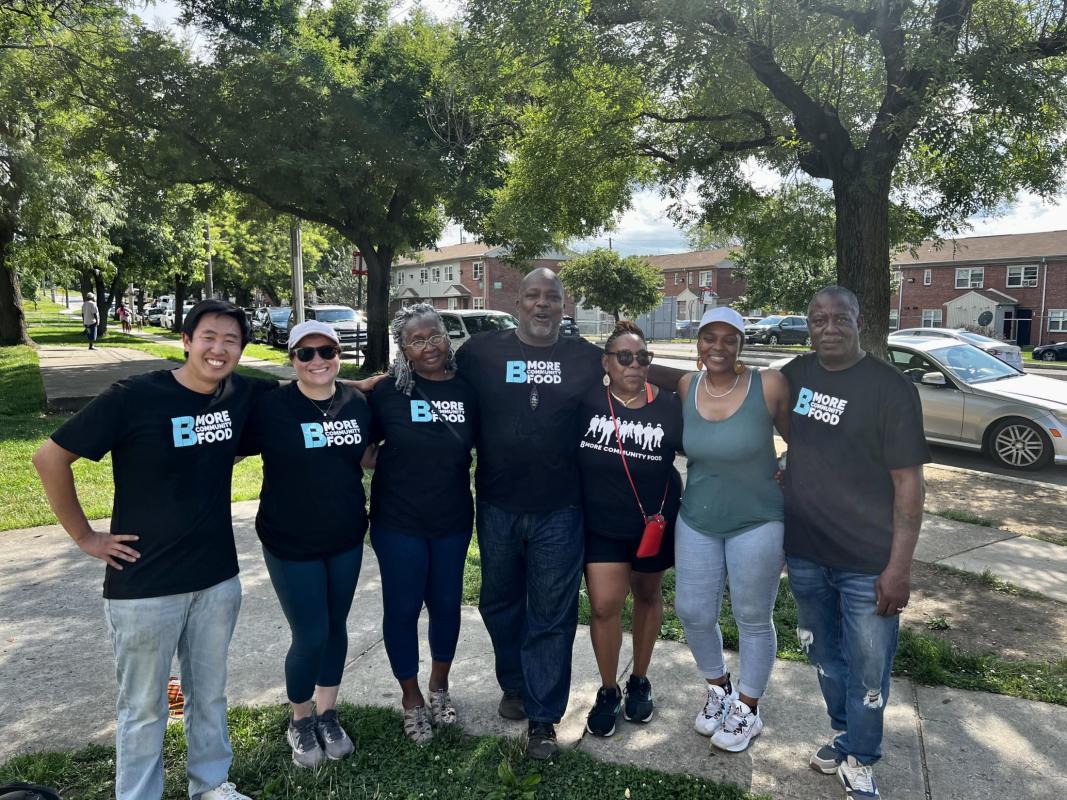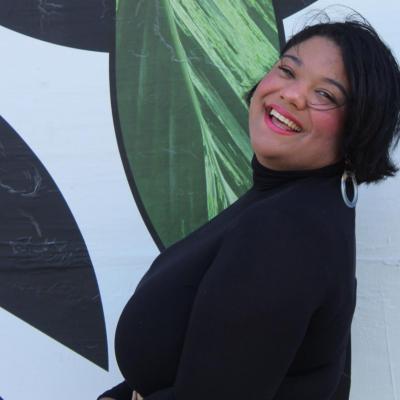
Aside from the occasional excursion to buy odds and ends for cooking, Greenmount West resident J.C. Faulk—a documentarian and diversity consultant—hardly ever shops for groceries. His cumulative food bill for the last three and a half years sits around $400. This seems impossible—especially in the wake of inflation—but Faulk is able to do it thanks to food rescuing, a practice in which he receives soon-to-be-discarded items from food sellers and restaurants.
In 2020, Faulk launched Bmore Community Food, an organization aimed at feeding city residents in need through food rescue, also referred to as food recovery or salvaging. Prioritizing Baltimore’s Black and Brown communities, he’s given away nearly 7 million pounds of food in the past three years via his distribution site in Remington.
Now, as Faulk works to double that figure by 2025, he’s in the process of developing a prototype model for a fleet of 20-foot, standalone refrigerated units that will be packed full of free rescued groceries. Faulk and his team plan to unveil the first prototype in Sandtown-Winchester this coming spring, with the locations of 15-20 future installations to be determined based on community feedback throughout next year. The units will be funded, in part, by various local foundations.
“We know that people are starving in the city,” he says. “Why aren’t we doing what we need to do to make sure they get fed?”
Expanding upon the idea of smaller community fridges (think: the Linwood Community Fridge near Patterson Park and the B’more Community Fridge—not affiliated with Bmore Community Food—in Greenmount West) the insulated cargo containers will store boxes of rescued food for public access, meaning anyone in need can help themselves at any time. Outfitted with solar lights, cameras, and buzzers, Faulk will be alerted of guests’ arrivals and have the ability to unlock the fridge remotely. If all goes according to plan, Faulk hopes that the units will function as models for similar programs all over the country.
Faulk plans to bring the vision to life with the help of students at Johns Hopkins University. During the spring 2024 semester, Faulk will collaborate with students enrolled in lecturer Nusaybah Abu-Mulaweh’s course on Social Impact Design—for which they will work to help build, strategize, and execute the prototypes.

According to Feeding America, a national network of food relief initiatives and meal assistance programs, roughly 120 billion pounds of food items are scrapped each year. Faulk marvels at the idea that hundreds of thousands of pounds of safe, edible items are discarded by restaurants and grocery stores to “make floor space,” or, in some cases, to avoid a liability for products nearing expiration whose appearances aren’t up to retail standards.
“We try to create relationships with [distributors] so that they know to call us rather than throwing food away,” Faulk says, explaining that the process doesn’t alter the bottom line for distributors, who are eligible to receive tax write-offs for food donations, and, in turn, make room for new inventory. “We’ve got distributors that will throw away what’s on their floor just because there’s a new truck outside. That’s ridiculous, when five minutes away, there’s a mother who can’t feed her babies.”
This was especially true around the start of the pandemic, during which Faulk—one of six kids brought up by a single mother—knew that families in his neighborhood were more than likely struggling to keep meals on the table.
“I knew I couldn’t solve the entire problem,” Faulk remembers, “but it kicked in immediately for me that I needed to do something about it.”
The first step was asking restaurants in the area to fork over their excess food. Most said yes, and soon, Faulk was delivering meals left and right—sometimes for 15 hours straight—to neighbors who could use them. Things accelerated when Bmore Community Food opened its first pick-up facility in Remington in 2020, where salvaged food donations, sourced from retail partners such as Dannon, Amazon, and Walmart, are organized for Baltimoreans in need.
As Faulk proudly notes, recipients aren’t subject to just any random goods. They often walk away with practically new items including produce, beverages, seafood (like scallops, tilapia, and shrimp) and snacks, which would otherwise be trashed by grocery stores. When thinking about some of the people he’s helped throughout the years, Faulk recalls serving a box to a man and his 10-year-old son. “He walks across the street, sits on the curb, opens the box up, and starts eating it right there. I looked at him and said, ‘You know what? That’s why we do what we do.’”
Though Faulk says the program’s Remington distribution site will remain in operation through December, the facility has begun transitioning to its new Penn-North home on Pennsylvania Avenue, directly across from the CVS where Faulk remembers spending time in the wake of the Baltimore Uprising.
“I was there after curfew every day,” he remembers. “I had police pointing guns at me. Now to be doing something on the ground so close to where the Uprising took place, to feed people from that position, to do something that helps people’s lives day to day—I’m excited about that.”
